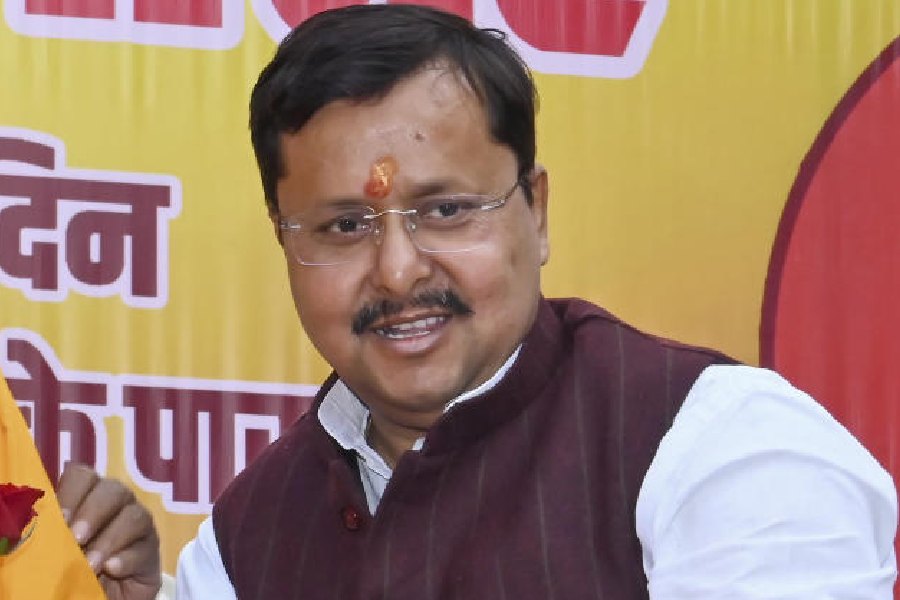Can independent India, which recalled its past and partially inherited it, delve into its past to uncover something new? Perhaps a hitherto unexplored aspect with shades of dynamism might make the past seem less weighty? One possible way to do this is to look at the practice of philosophy, one of the cerebral activities of India’s past.
Today, most Western universities do not consider any branch of philosophy from India — including rigorously argued Buddhist or Nyaya logic — to be philosophy. Indian philosophy is not taught in philosophy departments in the West, although it may find a place in other departments such as religion, albeit very rarely. In most Indian universities and colleges, a significant part of the syllabus comprises Western philosophy.
I want to clarify that the above statement is not a complaint about any form of imbalance. I am neither interested in promoting Indian philosophy to be taught at Western universities nor am I complaining about the dominant presence of Western philosophy in India. I merely wish to begin with this description of the state of philosophy and then move on without making this a direct point of reference.
I propose a relook at the Upanishads from classical India, ignoring the dominant reception and focusing, instead, on other aspects. Despite several differences, works on the Upanishads seem to converge on some major themes: Brahman, Atman, and the relationship between the two. I would like to phenomenologically bracket the preoccupation with these ancient texts and explore two aspects that have eluded scholars’ attention. One, shift the focus from what is said to who is speaking — specifically, the caste and gender configuration and, two, the nature of narration.
As far as the speaker is concerned, the Upanishads, like other Indian philosophical texts, were appropriated by upper castes and viewed through the prism of patriarchy, especially within the Brahmanical fold. Despite this, there are, indeed, a few women and non-Brahmin voices that are present. Among them are Gargi, Gautami, Jayanti, and Maitreyi, the second wife of Yajnavalkya. The dialogue between Maitreyi and her husband is central to the Brihadaranyaka Upanishad. There is also Jabala, who was non-Brahmanical. Maitreyi and Jabala are active and significant participants in some of the Upanishads. An Upanishad is named after each one of them.
These women and non-upper caste participants in the Upanishads present a significant contrast to, say, participants in Plato’s dial ogues. Unlike the Upanishads, there are no women in Plato’s dialogues, except perhaps a reference to Diotima, who is said to have been Socrates’s teacher. Not much is known about her philosophy or the nature of the knowledge she imparted to Socrates. However, there is no shortage of information on her student, who later became Plato’s teacher. This contrast between the unvarying homogeneity of characters in Plato’s dialogues and the diversity of the participants in the Upanishads has always intrigued me.
This diversity leaves some limited space for further exploration to present an alternative use of the Upanishads. Both women and non-upper castes can be elevated. According to modern standards, the mere presence of women and non-Brahmins is not enough. It is, however, necessary to acknowledge their presence, no matter how limited, in the Upanishads. Despite the conclusions drawn in the mainstream, it is possible to revisit each character who is a woman and a non-upper caste and listen to the arguments of these women and non-upper caste participants and, possibly, build their version of the universe. It is also possible to relate their views to the subsequent philosophical systems, thereby retrieving pluralist views from these divergent participants. This can bring a new dimension to the Upanishads that is different from the mainstream and the dominant version.
Even though there are these differences between Upanisads and Plato’s dialogues, there are, indeed, some striking similarities between them. In both, the form of narration is dialogue and inquiry. Unlike in the Vedas, where ideas are clearly stated, almost like axioms, in the Upanishads, there are many instances where the narration is in the form of inquiry. This mode of narration leads to two outcomes: first, it encourages the zeal to learn in the participants. Second, the process of different people participating in discussion and dialogue gives rise to a diversity of opinions and approaches.
Inquiry as a mode of learning invigorates the process of acquiring knowledge. In addition to dialogue and discussion, exploration brings freshness and dynamism to philosophical activity. The inquiry also leads to more variety with different arguments offered on a given topic. For instance, some argue that there is only Brahman, while others contend that there is Self and Brahman. Yet others maintain that there are two Selves, male and female, the latter created by the former to overcome fear and loneliness. The heterogeneous group of participants and the learning method through inquiry enable this form of diversity.
Instead of complaining about philosophies from India not being recognized as philosophy in the West, it is far more productive to try and enhance interest in philosophies from the past by highlighting the neglected aspects of these classical texts. The method of revisiting the past can be emulated in other aspects, such as the different forms of arts and literary texts. At a general level, it may perhaps be productive to turn our gaze from the outside to the inside and revisit mainstream texts to rejuvenate the past for the purpose and uses of the present.
(A. Raghuramaraju teaches Philosophy at the Indian Institute of Technology Tirupati)










